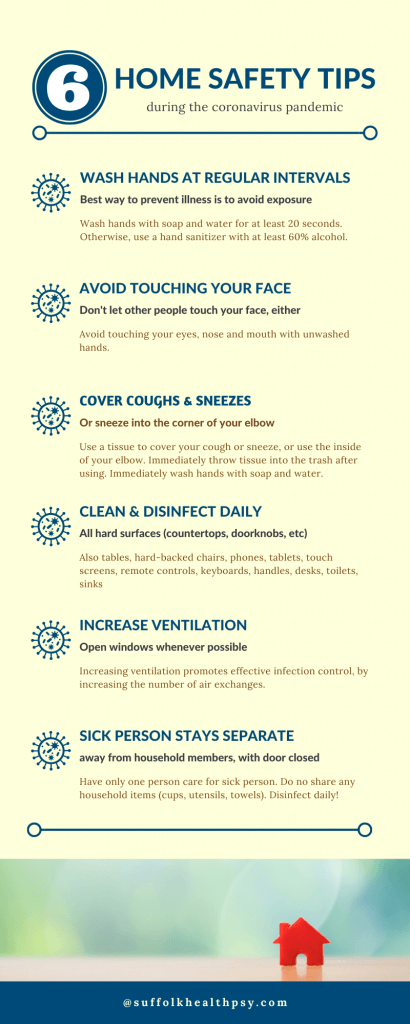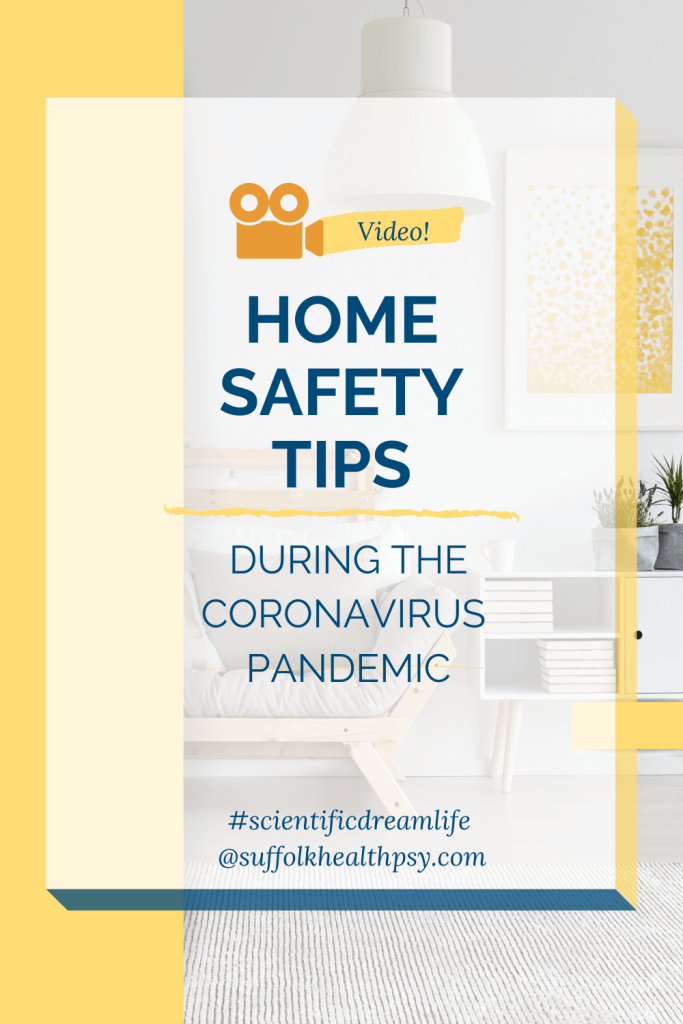← previous
next →
In this next vlog post, we learn about helpful tips for staying safe in the home during the coronavirus pandemic, whether we have household members that are all well, or household members that are sick.
For those folks that prefer to read text, here are the main highlights from the video (again, adding some humorous gifs, to help to lighten the mood, a bit):
All households
Wash hands at the door and at regular intervals
- Currently, there is no vaccine to prevent COVID-19.
- The best way to prevent illness is to avoid being exposed to the virus.
- The virus spreads from person-to-person contact:
- Between people in close physical contact ( about 6 feet)
- Droplets from coughing or sneezing
- Droplets land in mouths or noses when nearby or inhaled into the lungs.
- Wash your hands often with soap & water for at least 20 seconds.
- Otherwise, use a hand sanitizer with at least 60% alcohol.
Avoid touching your face
Avoid touching your eyes, nose and mouth with unwashed hands.
Cover coughs and sneezes
- Use a tissue to cover your cough or sneeze, or use the inside of your elbow.
- Immediately throw tissue into the trash after using.
- Immediately wash hands with soap and water.
RELATED: Video: Five tips for working from home during the COVID-19 pandemic
Clean & disinfect hard surfaces (countertops, doorknobs, tables, etc) daily
- Clean and disinfect high-touch surfaces daily in household common areas (e.g. tables, hard-backed chairs, doorknobs, light switches, phones, tablets, touch screens, remote controls, keyboards, handles, desks, toilets, sinks)
- In the bedroom/bathroom dedicated for an ill person: consider reducing cleaning frequency to as-needed (e.g., soiled items and surfaces) to avoid unnecessary contact with the ill person.
- For additional information, see the CDC website for cleaning and disinfecting of households.
Whenever possible, use cleaners that meet EPA’s criteria for use against SARS-CoV-2, the virus that causes COVID-19.
Keep window open whenever possible to increase ventilation
Increasing ventilation promotes effective infection control, by increasing the number of air exchanges.
Households with sick family members
Do not share items
- Do not share food, utensils, towels, etc.
- Remember to clean and disinfect every day!
Sick family member stays separate
- Sick person stays in a room separate from other household members, with the door closed.
- Have only one family member care for the sick person.
That’s another wrap, folks! Hope you enjoyed the video!
If you enjoyed this video, follow our Vimeo channel to be the first to know when new videos are published!
Home safety tips during the coronavirus pandemic INFOGRAPHIC
For trusted information regarding the COVID-19 (or SARS-CoV-2) pandemic, visit the CDC website.
Your turn
If you have a suggestion for a video or blog post, then I’d love to hear from you! Simply click here to tell me all about your idea. Thank you!
Has anyone in your household been ill, and/or tested positive for COVID-19? Please share your experience, by answering this question:
DENISE DIXON, PHD
Health psychologist
Dr Dixon is a licensed psychologist practicing in New York State, with specialities in neuro-immunology, trauma, health & wellness. Her contagious enthusiasm for sharing the science of health & behavior has earned her the nickname of “Dr. Smiles.” Dr Dixon also finds joy in motherhood; travel; outdoor sports; singing; piano; and cooking delicious (vegan) meals.
Did you enjoy viewing this vlog post? Please share it, by clicking one of these handy share buttons:





